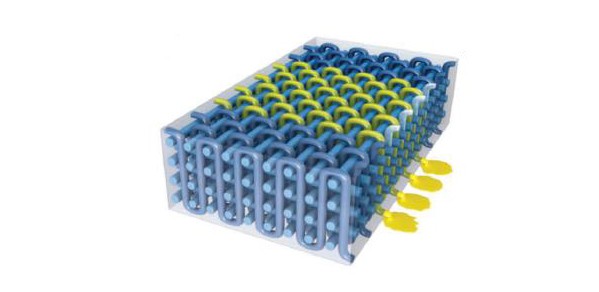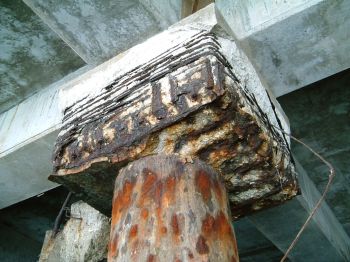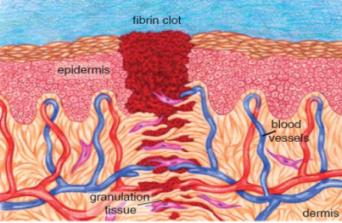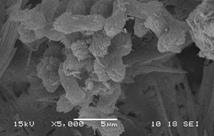
The Department of Engineering will play a major part in a new £3.1M EPSRC and industry funded UK Centre of Excellence on Intelligent Construction Materials from the recent EPSRC Ground and Structural Engineering Challenge call.
This is a very exciting opportunity for ground, structural and materials engineering, chemistry and biology researchers to unite UK and global efforts to develop construction materials for a low carbon sustainable and resilient future for our infrastructure and built environment.
Dr Abir Al-Tabbaa
The project Materials for Life: Biomimetic multi-scale damage immunity for construction materials, is a partnership between the University of Cardiff (Lead), University of Bath and the University of Cambridge. Dr Abir Al-Tabbaa (lead), together with Dr Janet Lees and Dr Michelle Oyen from Engineering and Professor Chris Abell from Chemistry form the Cambridge team. This is the first initiative of its kind in the UK and brings together leading UK academics in this field, together with a large number of international research centres, to ensure that the research is at the forefront of the global pursuit for intelligent infrastructure and built environment. The consortium consists of structural, geotechnical and materials engineers together with chemists, biologists and materials scientists. The Centre has significant involvement from a large number of industrial partners across the construction sector as well as the oil and gas and nuclear sectors.




The resilience of building and civil engineering structures is typically associated with the design of individual elements such that they have sufficient capacity or potential to react in an appropriate manner to adverse events. Traditionally this has been achieved by using 'robust' design procedures that focus on defining safety factors for individual adverse events and providing redundancy. As such, construction materials are designed to meet a prescribed specification; material degradation is viewed as inevitable and mitigation necessitates expensive maintenance regimes; ~£40 billion/year is spent in the UK on repair and maintenance of existing, mainly concrete, structures and ~$2.2 trillion/year is needed in the US to restore its infrastructure to grade B. More recently, based on a better understanding and knowledge of microbiological systems, materials that have the ability to adapt and respond to their environment have been developed. This fundamental change has the potential to facilitate the creation of a wide range of 'smart' materials and intelligent structures, including both autogenous and autonomic self-healing materials and adaptable, self-sensing and self-repairing structures, which can transform our infrastructure by embedding resilience in the materials and components of these structures so that rather than being defined by individual events, they can evolve over their lifespan.
Conglomerate materials, which form the basis of the majority of construction materials (concrete, grouts, mortars, hydraulically bound materials, grouted soils, cement asphalt etc), are extremely complex multiphase composites with multi-scale internal structures that exhibit a hierarchy of multi-dimensional, time-dependent damage mechanisms. Hence, it is evident that to truly achieve a self-healing cementitious composite a system is needed that can act at both the different time and length scales at which the damage can form. Similarly, when damaged, higher organisms, including man, use intrinsic immune systems and wound responses to provide a multi-scale response, from a chemical and cellular level through to the macro-scale at which any lesion is bound together and sealed to facilitate the healing process. It is recognised that the fundamental scientific understanding of how materials can be manipulated, by taking advantage of new ground breaking innovations in allied science disciplines, will pave the way for the development of a new generation of unique, versatile and robust construction material systems which would go beyond any system currently available.
Inspired by this, the Centre aims to create construction materials with an inbuilt "immune" system that is responsive to the condition of the material and the onset of damage. Starting with appropriate mix compositions and designs for optimal autogenous healing, the project will operate at the nano/micro-scale using microencapsulation strategies, at the micro/meso-scale through bacterial healing and at the meso/macro-scale, with fibres, shrinkage polymers and vascular networks providing mechanisms to enhance and control the overall physical response. This will then culminate in a number of field trials in partnership with the project industrial collaborators to take this innovation closer to commercialisation.
The project partners are: Arup, Atkins, BRE Trust, Bristol University Advanced Composites Centre for Innovation and Science; Bucknell University Civil Engineering Department, Chongqing University College of Materials Science and Engineering, CIRIA, Costain, Ghent University Magnel Laboratory for Concrete Research, Griffiths Contractors Ltd, Institution of Civil Engineers, Institution of Structural Engineers, International Federation of Structural Concrete, Laing O'Rourke, Metrostav, Modern Built Environment Knowledge Transfer Network, Nanjing University College of Materials Science and Engineering, National Grid, NTU Singapore Department of Civil and Environmental Engineering, Parsons Brinckerhoff, Schlumberger, Shell, Southeast University Schools of Materials Science & Engineering; Transportation and Geotechnical Engineering, Tongji University Department of Materials Science and Engineering, Tecnalia, TRL, TU Delft Department of Materials & Environment, University of Illinois Beckman Institute, URS Infrastructure & Environment and Welsh Assembly Government.
The centre will be formally launched at the 4th International Conference on Self-healing Materials in Ghent in June.

